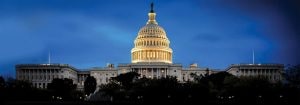Legislation on lighting is becoming increasingly stringent as new technology pushes the envelope on energy savings and efficiency. Philips offers a range of compliant products to best serve your needs. From simple lamp replacements to complex renovations, we can help you comply.
Legislation Tools & FAQs

Lighting Facts Labels
Manufacturers are now required to provide brightness (lumens) and energy-cost information on packaging within a detailed “Lighting Facts” label. This applies to all medium-based general service incandescent, halogen, LED and compact fluorescent bulbs.

Fluorescent State Ban
Fluorescent banning is coming, and it is coming fast, to find out if your state is or will be affected by this new regulation click in the link below.

Legislation FAQs
Learn more about new energy efficiency standards

Disposal Guidelines for Lamps Containing Mercury
Guidelines for the safe disposal of Mercury (Hg) containing lamps
Energy Policy and Conservation Act (EPCA)
1975
Established an energy conservation program for many consumer products.
1992
Amended the EPCA by setting minimum lamp efficiency standards for some incandescent reflector lamps and some general service fluorescent lamps. It also gave the Department of Energy authority to amend these standards if they were warranted.
Energy Independence and Security Act (EISA)
2007
EISA implements new efficiency standards for certain Incandescent Reflector Lamps (IRL) and directs the Department of Energy (DOE) to undertake new energy conservation standards rulemaking for incandescent reflector lamps and general service fluorescent lamps.
Section 321
2012
Section 321 of EISA sets minimum efficiency standards for general service incandescent lamps. Once implemented, this section will affect a number of lamps. Some of the most popular include the 100W, 75W, 60W and 40W A19 shaped incandescent lamps.
*These rules are not product bans. Rather they demand that new lamps meet certain performance requirements that, depending on the lamp, could include: lifetime, maximum wattage, and/or minimum lumen per watt requirements.
California Title 20
2018
Beginning January 1, 2018, California state-regulated LED lamps, small diameter directional lamps (SDDL), and general service lamps (GSL) manufactured on or after January 1, 2018 will be required to comply with the performance, testing and marking requirements of California’s Appliance Efficiency Regulations (Title 20).
https://www.energy.ca.gov/appliances/
California Title 24
The California Energy Commission’s Title 24 regulations outline energy efficiency standards for residential and non-residential buildings.
Department of Energy General Service Lamp Legislation
In April 2022 the US Department of Energy (DOE) adopted two new rules for general service lamps, that will conserve energy and help consumers , including households, schools, and businesses save on their energy bills.
The first rule establishes a revised definition of general service lamps while the second implements the minimum standard of 45 lumens per watt for general service lamps that meet the revised definition. According to the DOE, a GSL is defined as any ANSI screw or pin base lamp with lumens between 310 and 3300, and operating voltages at or between 12V, 24V, 100V – 130V, 220V – 240V, and 277V. You can find the full definitions of different lamps here.
Part 15 Class A
NOTE: This equipment has been tested and found to comply with the limits for a Class A digital device, pursuant to part 15 of the FCC Rules. These limits are designed to provide reasonable protection against harmful interference when the equipment is operated in a commercial environment. This equipment generates, uses, and can radiate radio frequency energy and, if not installed and used in accordance with the instruction manual, may cause harmful interference to radio communications. Operation of this equipment in a residential area is likely to cause harmful interference in which case the user will be required to correct the interference at his own expense.
Part 15 Class B
NOTE: This device has been tested and found to comply with the limits for a Class B digital device pursuant to Part 15 of the FCC Rules. These limits are designed to provide reasonable protection against harmful interference in a residential installation. This device generates, uses, and can radiate radio frequency energy and, if not installed and used in accordance with the instructions, may cause harmful interference to radio communications.
However, there is no guarantee that interference will not occur in a particular installation. If this device does cause harmful interference to radio or television reception, which can be determined by turning the device off and on, the user is encouraged to try to correct the interference by one or more of the following measures:
- Reorient or relocate the receiving antenna
- Increase the separation between the device and receiver
- Connect the device into an outlet on a circuit different from that to which the receiver is connected
- Consult the dealer or an experienced radio/television technician for help.
Changes or modifications not expressly approved by the party responsible for compliance could void the user's authority to operate the equipment.
Part 18 Class A & B
This product may cause interference to radio equipment and should not be installed near maritime safety communications equipment or other critical navigation or communication equipment operating between 0.45 – 30MHz.

Contact us
For business enquiries regarding any of our professional lighting systems, please use this form


